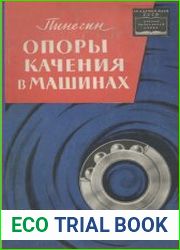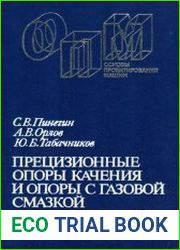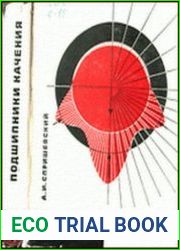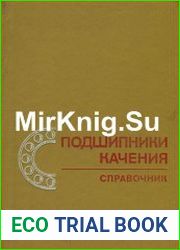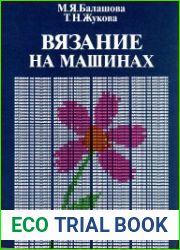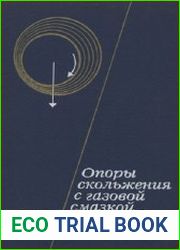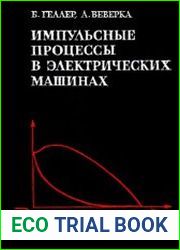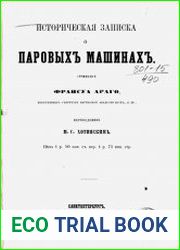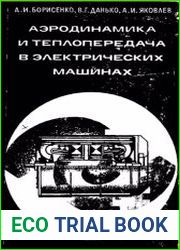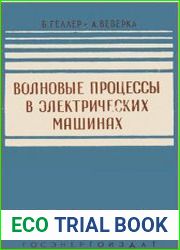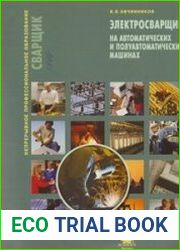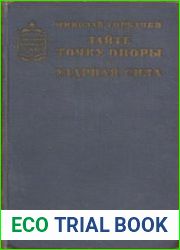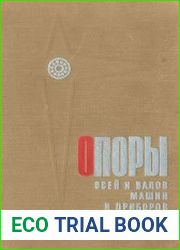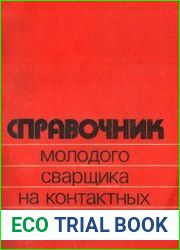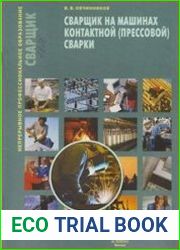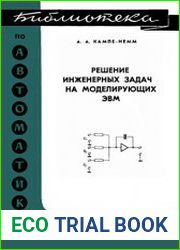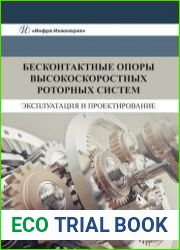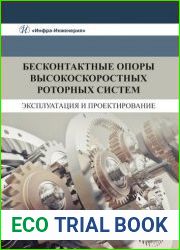
BOOKS - POPULAR SCIENCE - Опоры качения в машинах

Опоры качения в машинах
Author: Пинегин С.В.
Year: 1961
Pages: 155
Format: PDF
File size: 19.6 MB
Language: RU

Year: 1961
Pages: 155
Format: PDF
File size: 19.6 MB
Language: RU

The book "Опоры качения в машинах" (Rolling Bearings in Machines) is a comprehensive guide to understanding the technology behind one of the most critical components of modern machinery - rolling bearings. As the title suggests, the book delves into the intricacies of these bearings and their importance in ensuring the smooth functioning of various machines used in different industries. The author, a renowned expert in the field, provides a detailed overview of the evolution of rolling bearings and how they have become an essential element in modern technology. The book begins by explaining the concept of friction and wear, two fundamental principles that govern the behavior of rolling bearings. It then explores the various types of bearings, including ball bearings, roller bearings, and thrust bearings, each with its unique characteristics and applications. The author highlights the significance of understanding the principles of friction and wear to appreciate the role of rolling bearings in machine design and performance. As the book progresses, it delves into the technical aspects of rolling bearings, discussing the materials used in their construction, the manufacturing process, and the various types of surfaces that come into contact with the bearings. The author also explains the importance of surface finish and lubrication in reducing friction and wear, ensuring optimal performance and longevity of the bearings.
книга «Опоры качения в машинах» (Катящий Подшипники в Машинах) является подробным руководством по пониманию технологии позади одного из самых критических компонентов современного оборудования - катящиеся подшипники. Как следует из названия, книга вникает в тонкости этих подшипников и их важность в обеспечении бесперебойного функционирования различных машин, используемых в разных отраслях. Автор, известный эксперт в этой области, дает подробный обзор эволюции подшипников качения и того, как они стали важнейшим элементом современной техники. Книга начинается с объяснения концепции трения и износа, двух фундаментальных принципов, которые регулируют поведение подшипников качения. Затем рассматриваются различные типы подшипников, включая шарикоподшипники, роликовые подшипники и упорные подшипники, каждый из которых имеет свои уникальные характеристики и области применения. Автор подчеркивает важность понимания принципов трения и износа, чтобы оценить роль подшипников качения в конструкции и производительности машины. По мере развития книги она углубляется в технические аспекты подшипников качения, обсуждая материалы, используемые в их конструкции, процесс изготовления и различные типы поверхностей, которые соприкасаются с подшипниками. Автор также объясняет важность отделки поверхности и смазки для снижения трения и износа, обеспечения оптимальной производительности и долговечности подшипников.
s supports roulants dans les machines est un guide détaillé pour comprendre la technologie derrière l'un des composants les plus critiques de l'équipement moderne - les roulements roulants. Comme son nom l'indique, le livre plonge dans la finesse de ces roulements et leur importance dans le bon fonctionnement des différentes machines utilisées dans différents secteurs. L'auteur, un expert reconnu dans ce domaine, donne un aperçu détaillé de l'évolution des roulements et de la façon dont ils sont devenus un élément essentiel de la technique moderne. livre commence par expliquer le concept de frottement et d'usure, deux principes fondamentaux qui régissent le comportement des roulements. On considère ensuite différents types de roulements, dont les roulements à billes, les roulements à rouleaux et les roulements de butée, chacun ayant ses propres caractéristiques et domaines d'application. L'auteur souligne l'importance de comprendre les principes de frottement et d'usure afin d'évaluer le rôle des roulements dans la conception et les performances de la machine. Au fur et à mesure que le livre progresse, il s'intéresse aux aspects techniques des roulements, discutant des matériaux utilisés dans leur conception, du processus de fabrication et des différents types de surfaces qui entrent en contact avec les roulements. L'auteur explique également l'importance de la finition de surface et de la graisse pour réduire le frottement et l'usure, assurer une performance optimale et la durabilité des roulements.
libro « soportes de rodadura en las máquinas» es una guía detallada para entender la tecnología detrás de uno de los componentes más críticos de los equipos modernos: los rodamientos. Como su título indica, el libro profundiza en las sutilezas de estos rodamientos y su importancia para garantizar el buen funcionamiento de las diferentes máquinas utilizadas en las diferentes industrias. autor, reconocido experto en la materia, ofrece una visión detallada de la evolución de los rodamientos y de cómo se han convertido en un elemento esencial de la técnica moderna. libro comienza explicando el concepto de fricción y desgaste, dos principios fundamentales que rigen el comportamiento de los rodamientos. Luego se consideran diferentes tipos de rodamientos, incluyendo rodamientos de bolas, rodamientos de rodillos y rodamientos de empuje, cada uno con sus propias características y aplicaciones únicas. autor destaca la importancia de comprender los principios de fricción y desgaste para evaluar el papel de los rodamientos en el diseño y el rendimiento de la máquina. A medida que avanza el libro, profundiza en los aspectos técnicos de los rodamientos, discutiendo los materiales utilizados en su diseño, el proceso de fabricación y los diferentes tipos de superficies que entran en contacto con los rodamientos. autor explica también la importancia del acabado superficial y la lubricación para reducir la fricción y el desgaste, garantizando un rendimiento óptimo y la durabilidad de los rodamientos.
O livro «Suportes de Rolamento em Máquinas» (Rolamento de Rolamento em Máquinas) é um guia detalhado para a compreensão da tecnologia atrás de um dos componentes mais críticos dos equipamentos modernos - rolamentos rolantes. Como o título sugere, o livro apresenta a finitude desses rolamentos e sua importância para garantir a continuidade das diferentes máquinas usadas em diferentes setores. O autor, um conhecido especialista nesta área, dá uma visão detalhada da evolução dos rolamentos de balançamento e como eles se tornaram um elemento essencial da tecnologia moderna. O livro começa explicando o conceito de atrito e desgaste, dois princípios fundamentais que regem o comportamento do rolamento. Em seguida, são considerados vários tipos de rolamento, incluindo os rolamentos de bola, rolamento de rolo e rolamento árduo, cada um com suas características e áreas de aplicação únicas. O autor ressalta a importância de entender os princípios de atrito e desgaste para avaliar o papel dos rolamentos de balançamento na construção e desempenho da máquina. Conforme o livro evolui, ele se aprofunda nos aspectos técnicos dos rolamentos de balançamento, discutindo os materiais utilizados em seu projeto, o processo de fabricação e os diferentes tipos de superfícies que se relacionam com os rolamentos. O autor também explica a importância do acabamento da superfície e do lubrificante para reduzir o atrito e o desgaste, garantir o desempenho ideal e a durabilidade dos rolamentos.
I pilastri di rotazione nelle macchine sono una guida dettagliata alla comprensione della tecnologia dietro uno dei componenti più critici delle apparecchiature moderne: i cuscinetti a rotazione. Come si evince dal titolo, il libro rientra nella finezza di questi cuscinetti e la loro importanza nel garantire il funzionamento continuo delle varie macchine utilizzate in diversi settori. L'autore, un noto esperto in questo campo, fornisce una panoramica dettagliata dell'evoluzione dei cuscinetti di oscillazione e di come essi siano diventati un elemento fondamentale della tecnologia moderna. Il libro inizia spiegando il concetto di attrito e usura, due principi fondamentali che regolano il comportamento dei cuscinetti di oscillazione. Vengono poi considerati diversi tipi di cuscinetti, tra cui sfere, cuscinetti a rotelle e cuscinetti tenaci, ognuno con le sue caratteristiche e aree di applicazione uniche. L'autore sottolinea l'importanza di comprendere i principi di attrito e usura per valutare il ruolo dei cuscinetti di oscillazione nella progettazione e le prestazioni della macchina. Man mano che il libro si sviluppa, si approfondisce negli aspetti tecnici dei cuscinetti di oscillazione, discutendo i materiali utilizzati nella loro progettazione, il processo di fabbricazione e i diversi tipi di superfici che si toccano con i cuscinetti. L'autore spiega anche l'importanza della finitura della superficie e del lubrificante per ridurre l'attrito e l'usura, garantire prestazioni ottimali e la durata dei cuscinetti.
Das Buch „Wälzlager in Maschinen“ ist eine detaillierte Anleitung zum Verständnis der Technologie hinter einer der kritischsten Komponenten moderner Geräte - Wälzlager. Wie der Name schon sagt, geht das Buch auf die Feinheiten dieser Lager und ihre Bedeutung ein, um sicherzustellen, dass die verschiedenen Maschinen, die in verschiedenen Branchen verwendet werden, reibungslos funktionieren. Der Autor, ein ausgewiesener Experte auf diesem Gebiet, gibt einen detaillierten Überblick über die Entwicklung von Wälzlagern und wie sie zu einem wesentlichen Element der modernen Technik geworden sind. Das Buch beginnt mit einer Erläuterung des Konzepts von Reibung und Verschleiß, zwei grundlegenden Prinzipien, die das Verhalten von Wälzlagern regeln. Dann werden verschiedene Arten von Lagern betrachtet, darunter Kugellager, Rollenlager und Axiallager, die jeweils ihre eigenen einzigartigen Eigenschaften und Anwendungen haben. Der Autor betont, wie wichtig es ist, die Prinzipien von Reibung und Verschleiß zu verstehen, um die Rolle von Wälzlagern bei der Konstruktion und istung der Maschine zu bewerten. Während sich das Buch entwickelt, vertieft es sich in die technischen Aspekte von Wälzlagern und diskutiert die in ihrer Konstruktion verwendeten Materialien, den Herstellungsprozess und die verschiedenen Arten von Oberflächen, die mit den Lagern in Berührung kommen. Der Autor erklärt auch die Bedeutung der Oberflächenveredelung und Schmierung, um Reibung und Verschleiß zu reduzieren, eine optimale istung und Haltbarkeit der Lager zu gewährleisten.
''
Makinelerde Rulmanlı Rulmanlar (Makinelerde Rulmanlı Rulmanlar), modern ekipmanların en kritik bileşenlerinden biri olan rulmanların arkasındaki teknolojiyi anlamak için ayrıntılı bir kılavuzdur. Başlıktan da anlaşılacağı gibi, kitap bu rulmanların inceliklerini ve farklı endüstrilerde kullanılan çeşitli makinelerin düzgün çalışmasını sağlamadaki önemini ele alıyor. Alanında tanınmış bir uzman olan yazar, rulmanların evrimi ve modern teknolojinin önemli bir unsuru haline gelmeleri hakkında ayrıntılı bir genel bakış sunar. Kitap, rulmanların davranışını yöneten iki temel ilke olan sürtünme ve aşınma kavramını açıklayarak başlar. Daha sonra, her biri kendine özgü özelliklere ve uygulamalara sahip bilyalı rulmanlar, makaralı rulmanlar ve itme yatakları dahil olmak üzere çeşitli rulmanlar düşünülür. Yazar, makinenin tasarımında ve performansında rulmanların rolünü değerlendirmek için sürtünme ve aşınma ilkelerini anlamanın önemini vurgulamaktadır. Kitap ilerledikçe, rulmanların teknik yönlerini inceler, yapımında kullanılan malzemeleri, üretim sürecini ve rulmanlarla temas eden farklı yüzey türlerini tartışır. Yazar ayrıca sürtünmeyi ve aşınmayı azaltmak, rulmanların optimum performansını ve dayanıklılığını sağlamak için yüzey kaplama ve yağlamanın önemini de açıklıyor.
Rolling Bearings in Machines (Rolling Bearings in Machines) هو دليل مفصل لفهم التكنولوجيا وراء أحد أهم مكونات المعدات الحديثة - محامل التدحرج. كما يوحي العنوان، يتعمق الكتاب في التفاصيل الدقيقة لهذه المحامل وأهميتها في ضمان التشغيل السلس للآلات المختلفة المستخدمة في الصناعات المختلفة. يقدم المؤلف، وهو خبير مشهور في هذا المجال، لمحة عامة مفصلة عن تطور المحامل المتدحرجة وكيف أصبحت عنصرًا حاسمًا في التكنولوجيا الحديثة. يبدأ الكتاب بشرح مفهوم الاحتكاك والتآكل، وهما مبدآن أساسيان يحكمان سلوك المحامل المتدحرجة. ثم يتم النظر في أنواع مختلفة من المحامل، بما في ذلك محامل الكرة ومحامل الأسطوانة ومحامل الدفع، لكل منها خصائصها وتطبيقاتها الفريدة. ويشدد المؤلف على أهمية فهم مبدأي الاحتكاك والتآكل من أجل تقييم دور المحامل المتدحرجة في تصميم الآلة وأدائها. مع تقدم الكتاب، يتعمق في الجوانب التقنية للمحامل المتدحرجة، ويناقش المواد المستخدمة في بنائها، وعملية التصنيع، والأنواع المختلفة من الأسطح التي تتلامس مع المحامل. يشرح المؤلف أيضًا أهمية التشطيب السطحي والتشحيم لتقليل الاحتكاك والتآكل، وضمان الأداء الأمثل ومتانة المحامل.







